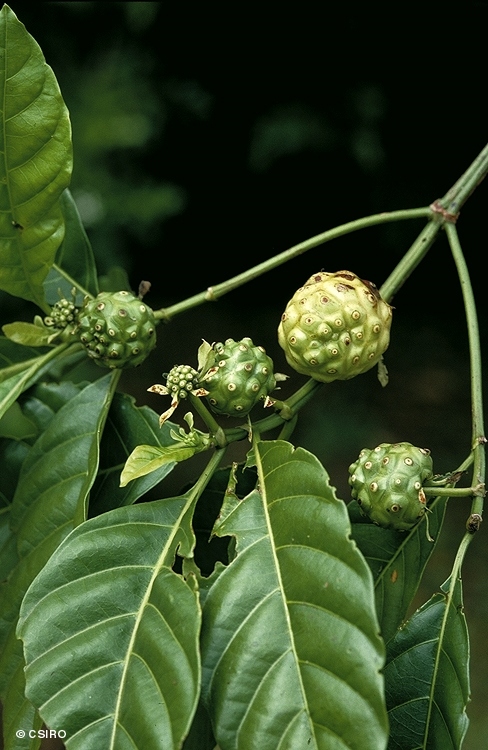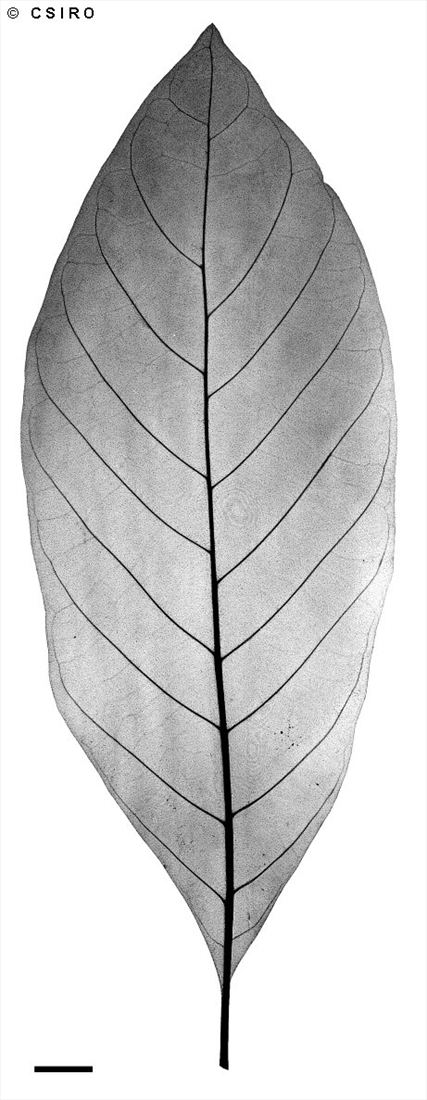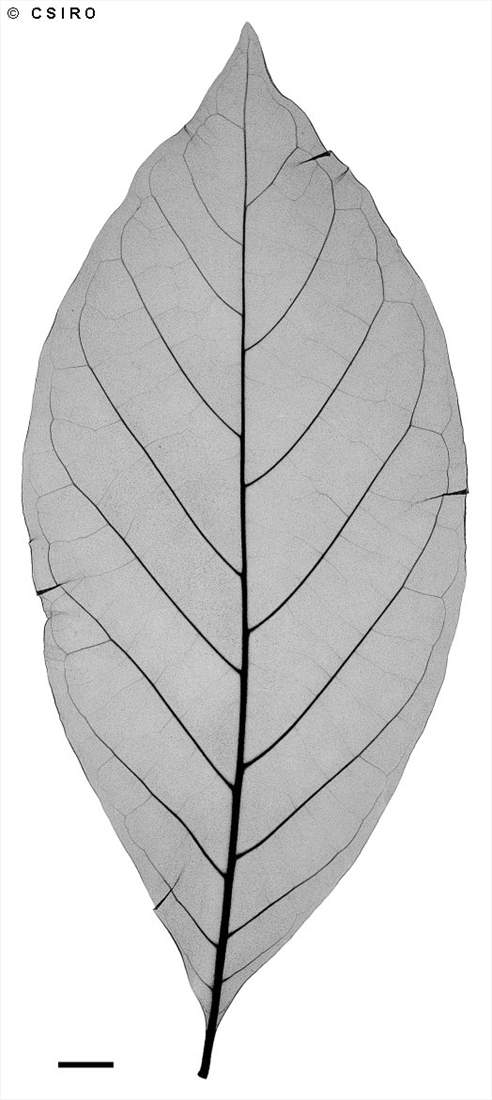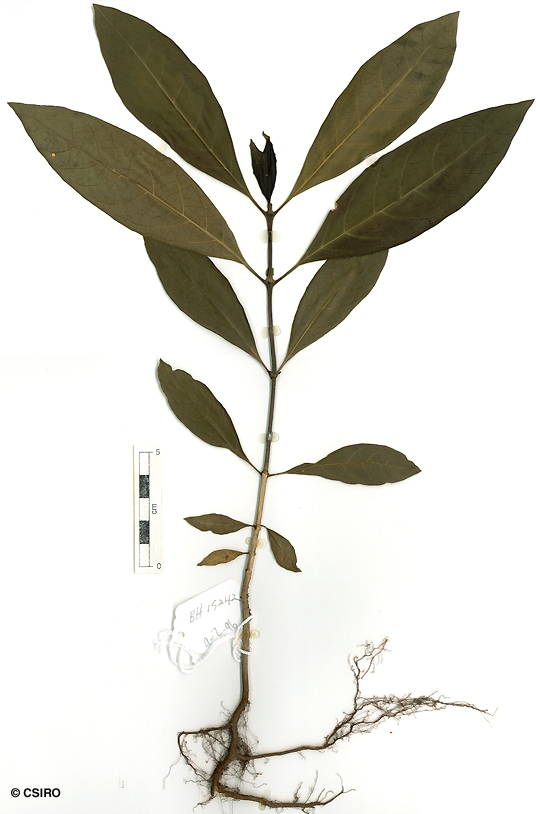Australian Tropical Rainforest Plants - Online edition
Morinda bracteata var. celebica (Miq.) Valeton






Valeton, T. (1908) Icons Bogorienses, Vol. 3, pp. 179–182, t. 269
Rotten Cheesefruit; Cheesefruit
Can grow into a small tree but usually flowers and fruits as a shrub 2-4 m tall.
Leaf blades mainly glabrous, rather large, about 12-25 x 4-10 cm, lateral veins curving inside the margins but not forming definite loops. Domatia are inconspicuous tufts of hair. Petiole grooved on the upper surface. Stipules +/- triangular, comparatively broad at the base and acuminate to almost aristate at the apex.
Flowers in a head with a number of white bract-like calyx lobes about 10-30 mm long. Calyx tube about 3 mm long (adjacent calyces +/- fused), calyx lobes nil or sometimes one very large lobe. Corolla tube glabrous, less than 1 mm long, corolla lobes glabrous, about 2-3 mm long. A dense ring of white hairs visible on the inner surface of the corolla tube at the same level as the stamens. Anthers about 1.5-2 mm long. Ovary locules difficult to discern and ovules difficult to detect.
Multiple fruits soft, fleshy and malodorous when ripe. 'Seeds' about 9 x 3-5 mm immersed in pulp. The apparent seeds are actually endocarp each of which usually contains a somewhat smaller true seed which has a rudimentary wing at one end. Embryo small, cotyledons slightly wider than the radicle.
Cotyledons stipulate, +/- elliptic, about 12-18 x 6-7 mm. First pair of leaves opposite and stipulate, each stipule with a spur-like appendage on the midrib. At the tenth leaf stage: leaf blade elliptic or narrowly obovate, +/- glabrous. Stipules triangular, about 3-4 mm long. Seed germination time 34 to 39 days.
Occurs in NT, CYP and NEQ. Altitudinal range from near sea level to 240 m. Grows as an understory plant in gallery forest and monsoon forest. Also occurs in Asia and Malesia.
Morinda citrifolia var. bracteata F.M.Bailey, Queensland Agricultural Journal 15(80: 898, (1905), Type: Coen, Mrs. R.W. Garraway, April, 1905. Morinda bracteata f. celebica Miq., Annales Musei Botanici Lugduno-Batavi 4(7): 212 (1869).





